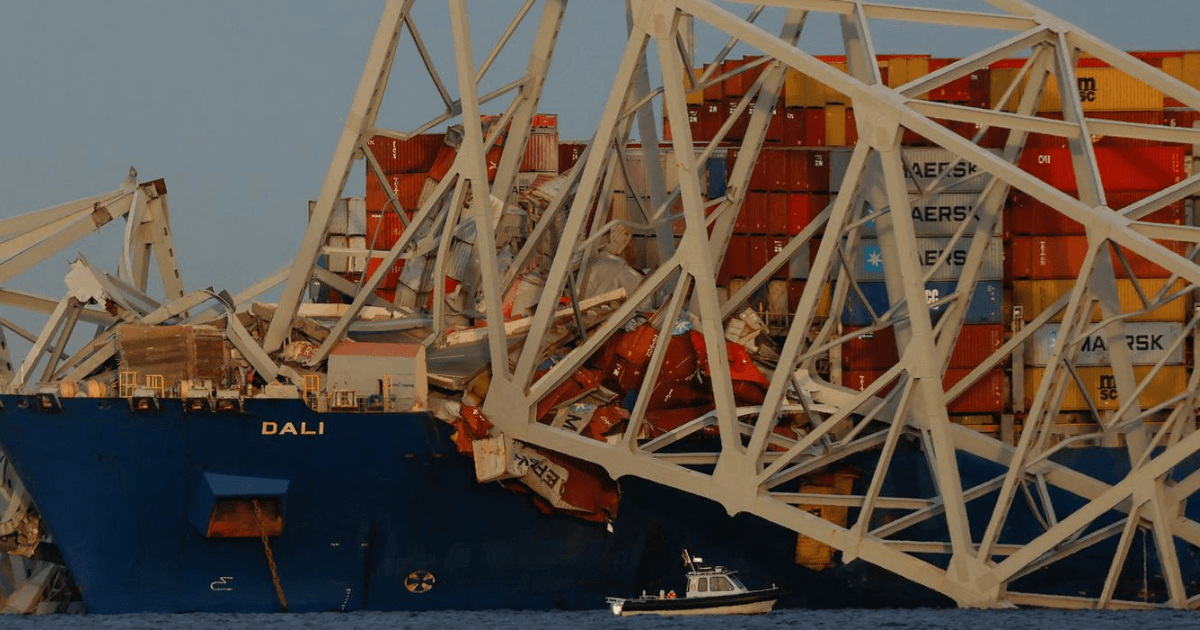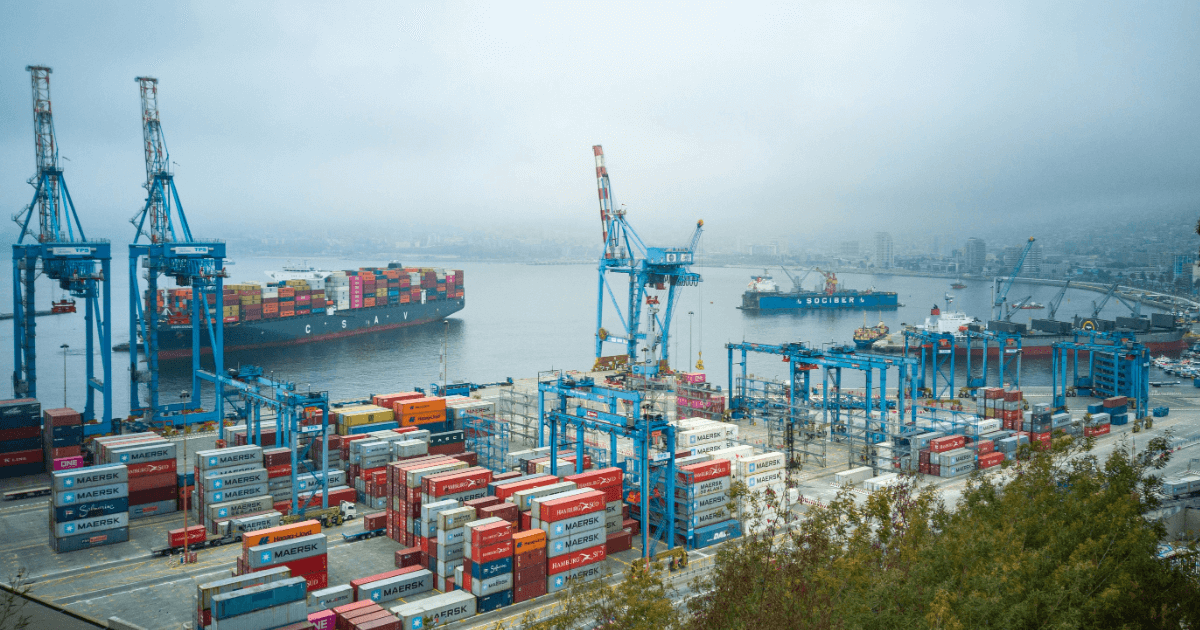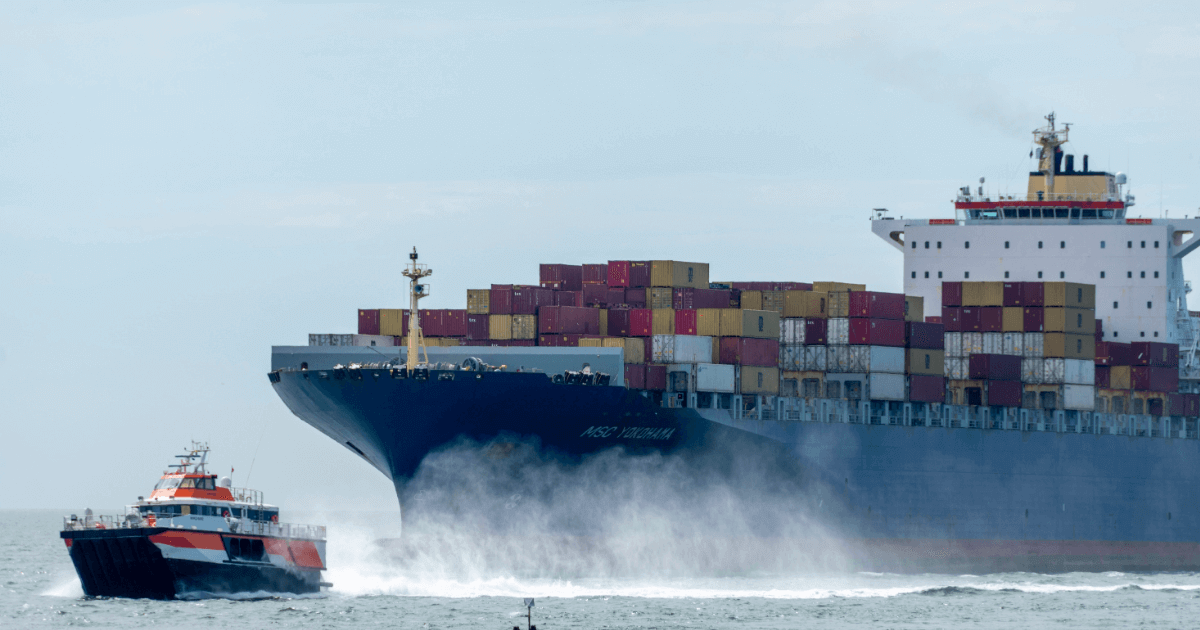Table of Contents
- Collapse of the Francis Scott Key Bridge in Baltimore
- Immediate impact on the supply chains
- Long-term consequences for Baltimore and the environment
- Comparison of safety standards in shipping: USA vs. Germany
- From disaster to opportunity: lessons learnt from the Baltimore Bridge collapse for a safer future
Baltimore Bridge crash affects logistics
Reading Time: 5 min.

Collapse of the Francis Scott Key Bridge in Baltimore
On 26 March 2024, the container ship "Dali" rammed into a support pillar of the Francis Scott Key Bridge in Baltimore, causing it to collapse. The motorway bridge is over 2.5 km long and is heavily used due to its multiple lanes. At the time of the collapse, construction work was being carried out on the bridge, which meant that several workmen were also working on the bridge. As a result of this incident, many vehicles and people fell into the approximately 15 metre deep water of the Patapsco River. A short time later, the rescue services suspended the search for missing persons as no more survivors were expected in the cold water. A total of six people were missing.
This unforeseen event led to an immediate interruption of traffic and also had a significant impact on transport and logistics in the region. The effects of this accident can also be seen globally.
Immediate impact on the supply chains
The direct impact of this incident on US supply chains was severe. There were significant disruptions to both US and global supply chains. Baltimore, a hub for East Coast freight traffic, experienced severe disruption as larger ships were forced to divert to a neighbouring port, causing significant detours and delays. The immediate need to find alternative routes posed a significant logistical challenge.
Overall, this event shows how important it is to react quickly to changes in the supply chain. In order for this rapid response to take place, the data from the supply chain should be transparent and accessible to everyone involved. In our self-developed Line Up Supply Chain Dashboard, we digitally map your individual supply chain so that all parties can view changes, location and real-time data on your order at any time, enabling us to react immediately.
Long-term consequences for Baltimore and the environment
In addition to the immediate logistical challenges, the long-term impact on Baltimore and the surrounding environment is also significant. The incident resulted in an oil sheen on the water caused by a sunken concrete mixer and several cars that were part of the bridge collapse. This raises significant questions about environmental safety and the need for more effective emergency plans and safety measures. The overall global impact remains to be seen.
In addition, the bridge construction and the recovery of the individual bridge sections will take several months and a lot of financial resources, which will limit Baltimore's use as a central port. Furthermore, many people and machines will be needed to speed up the reconstruction process. Cargo ship traffic will be prevented and impaired by the bridge replacement. As a result, several diversions will have to be set up, as Baltimore is considered a central port for logistics processes. The Baltimore harbour will not be fully usable for several months.
Baltimore is generally one of the top 10 ports in the USA and is considered the most important US port for car transport. Almost 750,000 vehicles were handled there in 2023. It is also the largest port for handling agricultural and construction machinery as well as agricultural products. Passenger traffic is also very busy at the Port of Baltimore. Almost 444,000 passengers were handled there in 2023.
Comparison of safety standards in shipping: USA vs. Germany
Interestingly, such an event would hardly be conceivable in Germany due to stricter building regulations and safety standards. The regulations that define the strength of steel beams and the integration and ability of crash barriers to withstand such impacts are an essential part of infrastructure safety in Germany. It is true that it can never be guaranteed with absolute certainty that a comparable incident could not occur in Germany. However, it is clear that the safety standards and measures in Germany are considerably stricter and more comprehensive. The cause of the incident cannot be attributed primarily to US building regulations or freight regulations, but rather to the container ship that collided with the bridge.
This incident emphasises the urgency of adapting international best practices and strengthening infrastructure safety standards globally, as robust bridges are critical to maintaining logistics operations and their far-reaching impact. One of the key elements is the infrastructure of solid bridges that enable essential routes for lorry freight traffic. However, due to the need for reconstruction, diversions are now also necessary, which may result in potential delivery delays.
From disaster to opportunity: lessons learnt from the Baltimore Bridge collapse for a safer future
The Baltimore Bridge collapse serves as a wake-up call to the need to holistically strengthen our infrastructures and review safety standards to avoid such catastrophic events in the future. It also highlights the critical importance of robust and flexible supply chains that can absorb such unpredictable events. As the industry and authorities work together to learn from this incident and take action, the hope remains that such events will provide impetus for a sustainable and secure future for logistics and infrastructure.
Newsletter Registration
Sign up now for our free Line Up newsletter and stay up to date.



